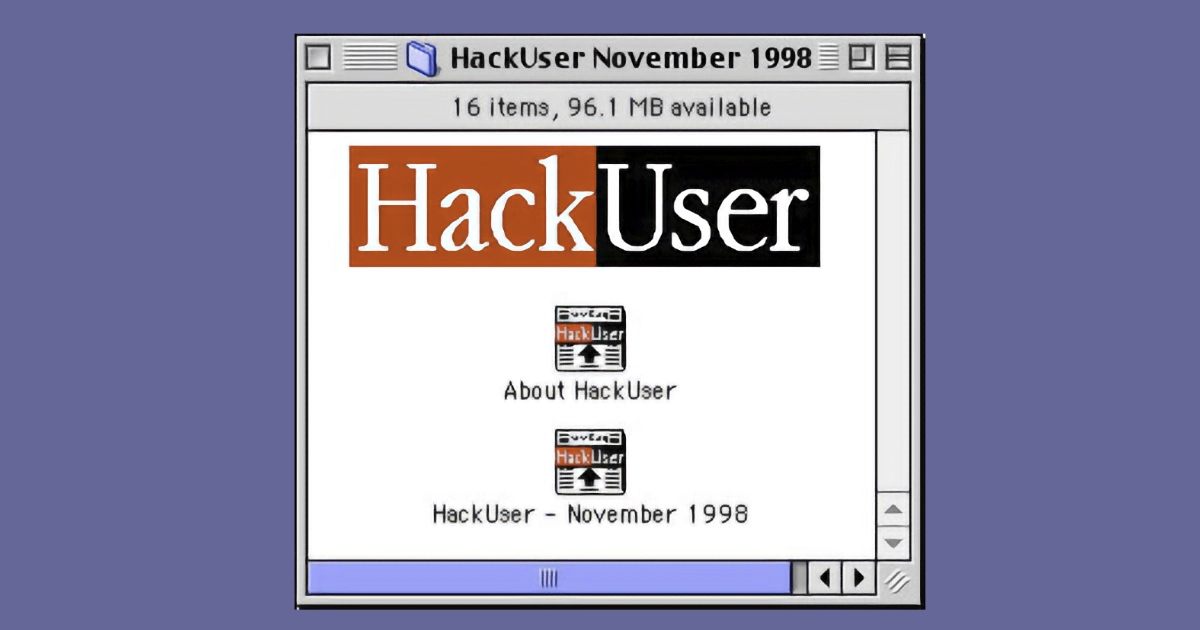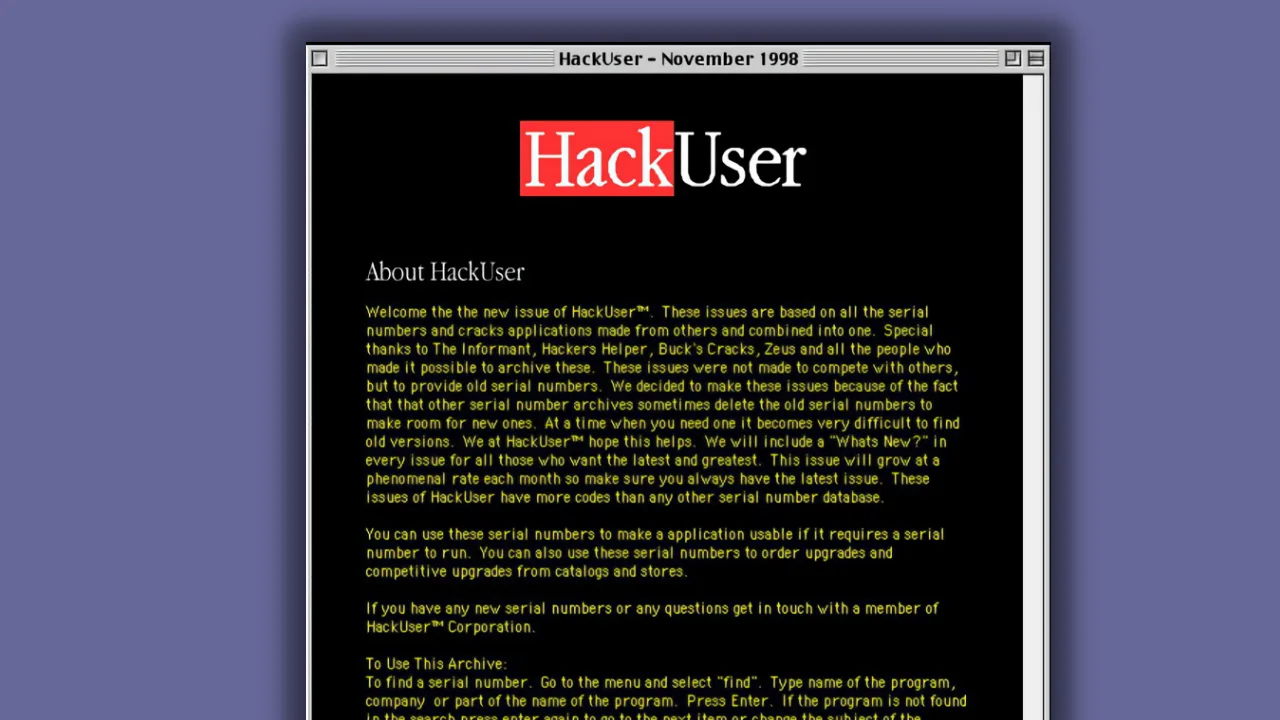Blast from the Past: HackUser
The Controversial Macintosh Utility That Kept Old Software Alive
Hello, fellow Macintosh enthusiasts! Welcome to this week's edition of "Retro Mac Rewind," where we dive into the quirky, controversial, and sometimes forgotten corners of Macintosh history. Today, we're turning back the clock to November 1998 to explore a utility that had the Macintosh community buzzing: HackUser.
In the late '90s, as software was evolving at a breakneck pace, many Mac users found themselves with a library of older programs they couldn't bear to part with. Enter HackUser, a tool that promised to breathe new life into aging software by providing a vast database of serial numbers and cracks.
Now, before we go further, let's address the elephant in the room: HackUser operated in a legal and ethical gray area. It's important to note that using software without proper licensing is generally not legal or ethical. However, HackUser's creators positioned their tool as a means of preservation rather than piracy.

Use Your Old Software Again.
The HackUser team described their mission as archiving old serial numbers that were often purged from other databases to make room for newer software. They saw themselves as digital archaeologists, preserving access to software that might otherwise be lost to time.
What made HackUser unique was its comprehensive approach. The creators compiled serial numbers and cracks from various sources, crediting contributors like "The Informant," "Hackers Helper," "Buck's Cracks," and "Zeus." This collaborative effort resulted in what they claimed was the most extensive serial number database available at the time.
HackUser releases were eagerly anticipated by a subset of the Mac community. Each monthly issue promised growth "at a phenomenal rate," with a "What's New?" section catering to those seeking the latest additions.
Product Description
About HackUser
Welcome the the new issue of HackUser. These issues are based on all the serial numbers and cracks applications made from others and combined into one. Special thanks to The Informant, Hackers Helper, Buck's Cracks, Zeus and all the people who made it possible to archive these. These issues were not made to compete with others, but to provide old serial numbers. We decided to make these issues because of the fact that that other serial number archives sometimes delete the old serial numbers to make room for new ones. At a time when you need one it becomes very difficult to find old versions. We at HackUser hope this helps. We will include a "Whats New?" in every issue for all those who want the latest and greatest. This issue will grow at a phenomenal rate each month so make sure you always have the latest issue.These issues of HackUser have more codes than any other serial number database. You can use these serial numbers to make a application usable if it requires a serial number to run. You can also use these serial numbers to order upgrades and competitive upgrades from catalogs and stores.
If you have any new serial numbers or any questions get in touch with a member of HackUser Corporation.
To Use This Archive:
To find a serial number. Go to the menu and select "find". Type name of the program, company or part of the name of the program. Press Enter. If the program is not found in the search press enter again to go to the next item or change the subject of the search.

About HackUser Page
More Than Just Rebooting Old Software
But HackUser wasn't just about running old software; it also provided a pathway for users to order upgrades or competitive upgrades from catalogs and stores. In a time before widespread digital distribution, this feature helped users navigate the complex world of software licensing and upgrades.
Useful Tool
Looking back, HackUser represents a fascinating moment in Macintosh history. It highlights the community's desire to preserve and continue using older software, even as the platform rapidly evolved. It also underscores the complex relationship between users, developers, and the concept of software ownership.
While we can't condone the use of unlicensed software, HackUser serves as a reminder of the passion and ingenuity of the Macintosh community. It's a testament to the enduring appeal of classic Mac software and the lengths to which enthusiasts would go to keep their beloved programs running.
As we reflect on utilities like HackUser, it's worth considering how far we've come in terms of software preservation and backwards compatibility. Today, initiatives like the Internet Archive's software library provide legal ways to experience classic software, while Apple's own efforts have made transitioning between system versions smoother than ever.
Your Thoughts?
What are your thoughts on HackUser and similar utilities from the '90s? Did you ever use them to keep your favorite old programs running? Share your experiences in the comments below, and join us next week for another journey into Macintosh history!
Remember, folks: always respect intellectual property rights and support software developers by purchasing and using software legally. Happy computing!
